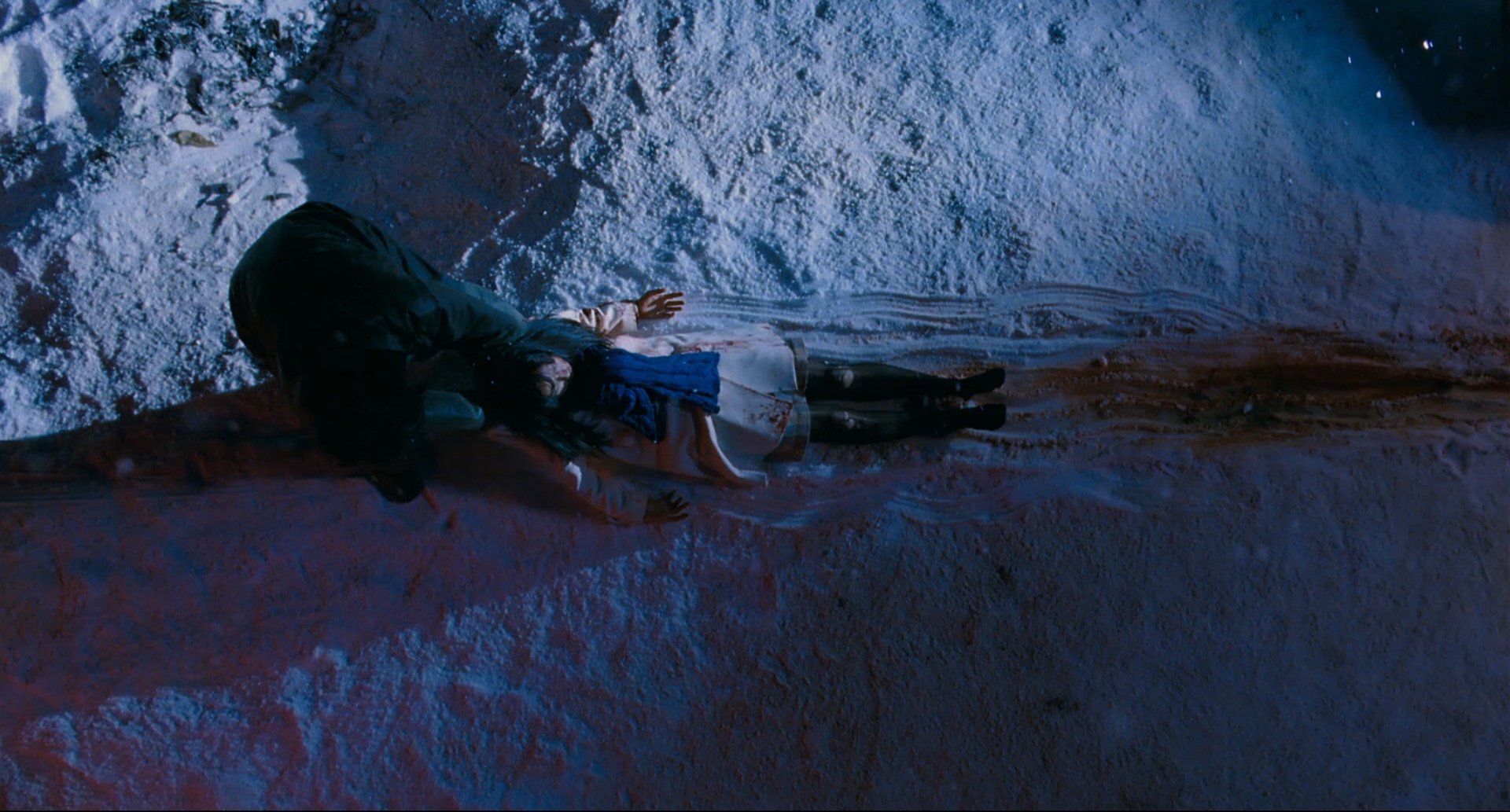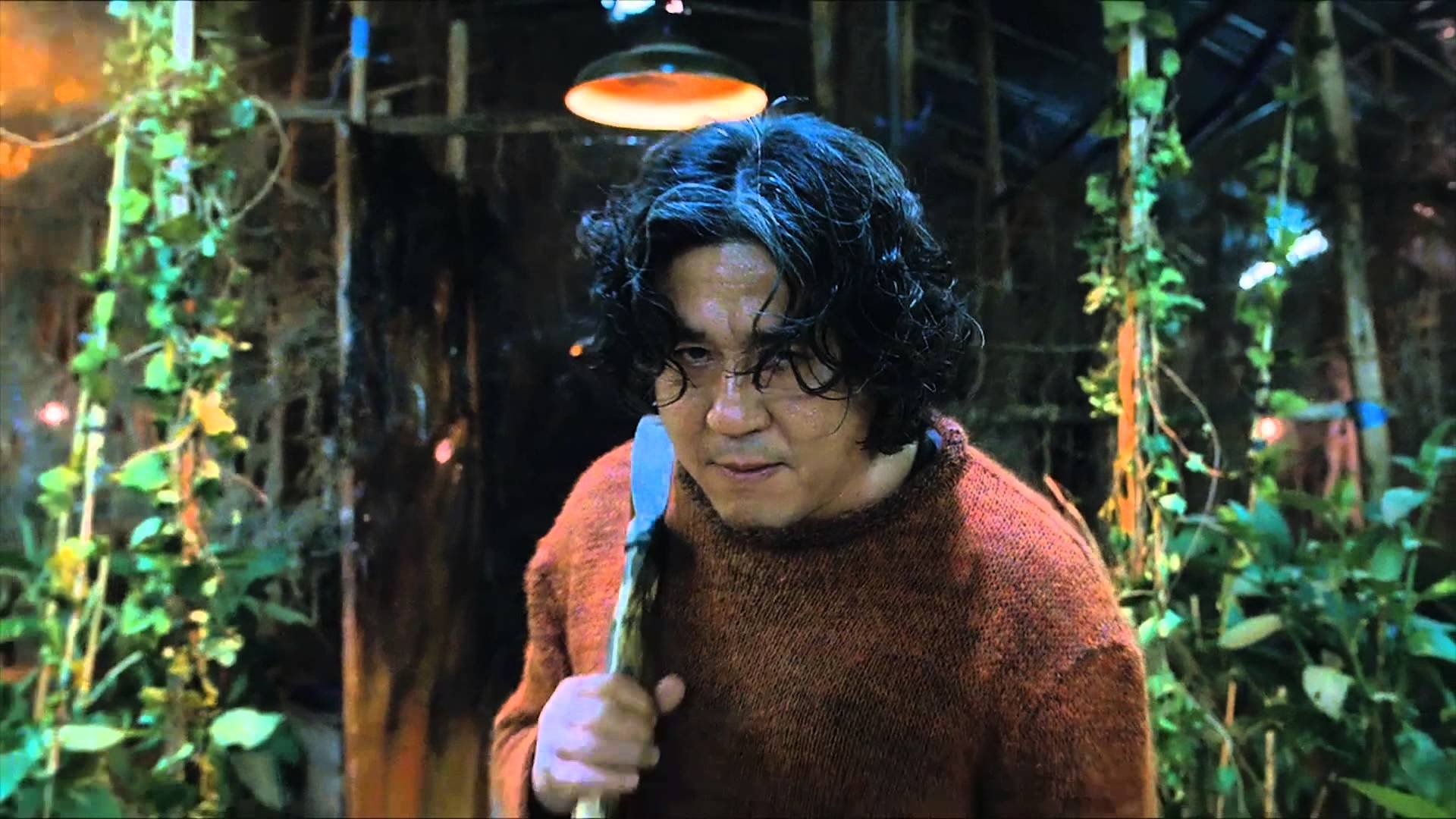I Watched It So You Don't Have To: I Saw The Devil
It’s been a banner few years for Korean movies. With widespread releases like Parasite garnering attention on a mainstream international level and recognizable faces appearing in quiet dramas like Burning, it appears that the appreciation international film buffs have been displaying for some time now is being shared on a larger scale. Which obviously means it’s time to revisit the insane Korean horror movies studded with extreme gore, complex characters, and incredibly murky morals like Jee-woon Kim’s thriller I Saw The Devil (2010).
Before getting into the synopsis, I feel it necessary to explain that I thoroughly enjoyed this movie but watched it casually when it came on Pluto Terror (I also caught The Wailing the same week in a similar fashion so... good week all in all) and was not prepared for what I saw. Obviously, this has colored my perspective on the film and the gray areas on which the audience was intended to muse. Having said that, let’s begin:
A school bus driver comes across a young woman waiting in her car on the side of a snowy road. He offers her help though she insists she’s fine. For a moment, she is left alone but then the driver returns with a hammer and forces his way into her car, smashing her several times in the head before dragging her body back to his vehicle. When the young woman awakes, she is wrapped in plastic in the driver’s lair. Begging him not to kill her, she tells him she’s pregnant. She is then decapitated; her engagement ring rolls into a grate as the driver cleans up the mess.
Unfortunately for the driver, he just murdered the financee of Kim Soo-hyeon (Lee Byung-hun), an active agent in the National Intelligence Service. The search for his fiancee starts after part of her ear is found, and the final grim discovery is her severed head, which is accidentally dropped and rolls to Kim’s feet. (Please note that all this happens quite close to the beginning of the movie. I Saw The Devil is not here for the slow burn.)
Kim sets off on his own mission to find the killer. He is told of four possible suspects, two of whom he tortures and brutalizes until he is convinced they’re not the killer. At the home of the third suspect Jang Kyung-chul (Choi Min-sik), he discovers his fiancee’s engagement ring, proving Jang’s guilt – his grisly fate, as we will come to see, is now sealed.
As Jang is sexually assaulting a school girl he lured to him, Kim finds him, overpowers him and then knocks him unconscious by beating his head into a rock. He inserts a GPS tracker into Jang’s body via his throat then vanishes. When Jang regains consciousness, he stumbles along the road until he is picked up by two men in a taxi who plan to rob and murder him. Jang kills them both first, dispatches of their bodies and the body of the slaughtered cab driver he finds in the trunk then proceeds to a hospital to get medical attention and sexually assault a nurse. Like magic, Kim shows up and slices Jang’s achilles tendon before again disappearing.
While visiting his fellow murderer and friend Tae-joo, a man who has a live-in girlfriend despite being a cannibal, Jang is again followed and attacked by Kim. All three of the criminals (Jang, Tae-joo, and his girlfriend Se-jung) are incapcitated and hospitalized. Jang overhears Kim and another agent discussing the tracker, and at the hospital, he steals laxatives to flush it out then later plants it on a truck driver he savagely pummels.
Kim kidnaps Jang one final time after Tae-joo (Moo-Seong Choi) reveals that Jang is headed to the house of his fiancee’s (and his squad chief’s) family. Placed in an elaborate guillotine, Jang is forced to hold the rope of the mechanism between his teeth in order to keep himself from decapitation. When his estranged parents and child start knocking on the door, he begs them through clenched jaws to leave but they let themselves in and cause another mechanism rigged up by Kim to behead Jang right in front of them.
In the end and after his ethically nebulous mission is completed, Kim is seen walking down the side of the road, crying with each step.
Clearly, the audience is supposed to meditate on the idea of the purpose of revenge and justice – how is either served and where the lines are that demarcate someone as a righteous vigilante or a depraved psycho no better than the ones they are fighting. The title, as well as the main poster art, points to an ambiguous answer as to who the true devil is, playing on the Nietzsche quote of hunting monsters and becoming one. The problem for me when it comes to this ambiguity is that I remained on Kim’s side throughout the entire movie. Even in the grand finale where Jang’s poor family is witness to his gruesome death, I found myself thinking that it was the perfect insult to injury: the family he abandoned and whose shame he couldn’t bear should they discover his true nature are no longer oblivious to the person he was. I was so strongly ‘Team Kim’ that the moral gray area and the question of is sheer vengeance ever justified didn’t really deter me. Jang’s crimes are so horrific and he is so without remorse or even internal conflict that I found immense catharsis in watching Kim’s mission. I don’t mean this so much as a negative criticism of the film but rather as pointing to a personal reaction which might not be the norm.
Many analyses and reviews of this movie use the word ‘unflinching’ to describe the graphic scenes, and mine will be no different. There’s really no other way to accurately convey the violence both against the female victims of the serial killers and the violence rendered upon them. At some points during the most grotesque moments, the shots of what was going on were almost clinical, without pathos or flair. Like the unpleasant ending of Pascal Languir’s Martyrs, the carnage was presented in a more matter-of-fact way rather than stylized. Adding to that are scenes of clean up and daily activities which remind the viewer of how we want people like Jang to be monsters instead of flesh and blood humans. This isn’t a movie where the killer is almost magical in their ability to remove evidence and get rid of bodies; we watch the routine of Jang sweeping viscera into a grate as if doing maintenance on a work space.
Though I do not condemn Kim’s behavior, the movie is populated with characters expressing concern and doubt despite not knowing even half of what he’s doing. His fiancee’s sister tells him no amount of inflicted pain can bring back their lost loved one. Colleagues push him to take more time off to grieve instead of returning to work after two weeks and immediately joining the investigation. Outside of himself, people can see the damage this is doing to Kim, and know full well how his actions will tarnish him irrevocably. The moment in the hospital when the cannibal Tae-joo’s jaw is broken by Kim seems to express the mania and obsessive nature of Kim’s goal. He has information Kim needs on the whereabouts of Jang and Kim has no qualms in doing what he feels has to be done.
Now, regardless of how I feel, the final image of Kim alone and crying doesn’t exactly support the idea of him being at peace with the loss of his fiancee and unborn baby. Yet it does point to the fact that he is not a monster lacking a moral compass, clearly navigating an absolute tangle of emotions. Between the depth of character and the flawless acting, I Saw The Devil is able to present a portrait of a hero and a villian that brings sympathy to the surface but doesn’t condone or absolve the decisions made by either.
Aside from the content of the movie, a lot needs to be said about the look of the movie and how beautifully it utilizes what could otherwise be seen as banal. Against the horrific moments with their clinical eye are snowy landscapes and pinkly glowing horizons. The opening scene where Jang attacks the young woman in the car is simple and cleanly shot, using the snow and the streetlights as commonplace beauty. Great looking gore is not a new trend, but unlike Italian giallo movies which revelled in art direction and artifice (not a dig, I adore them), I Saw The Devil pulls the exquisite out from the background, displaying what can be striking and disturbing in reality. A blanket of snow sporting a serpentine streak of blood or a search party unfolding across a wide open vista become subtly arresting images in the hands of director Kim Jee-woon. It’s no wonder that even critics who lambasted the movie as ‘offensive’ and ‘repugnant’ mention its aesthetic appeal.
I now join the legion of I Saw The Devil fans who are always clamoring for this film to be seen by a broader audience, though I am unsure of who that audience would be. Since there are more Korean films making their way to the mainstream, I wonder if soon there will be a space for a piece of work like this one. There’s plenty of torture porn and grisly horror movies gobbled up by the masses, advertised across all forms of media and score huge opening weekends like the continuing Saw franchise but I Saw The Devil might fall too much in between genres to really be the full-on hit it deserves to be. It’s quite long (141 minutes) and has lots of scenes of people struggling with complicated emotions. Motives often go unexplained. Lots of backstory is purposefully missing. In a perfect world, a movie like this would be widely recognized, but we do not live in a perfect world, as the film itself can tell you. We are imperfect creatures flailing through complex lives, and sometimes the moral of the story is that there’s no easy answer.








